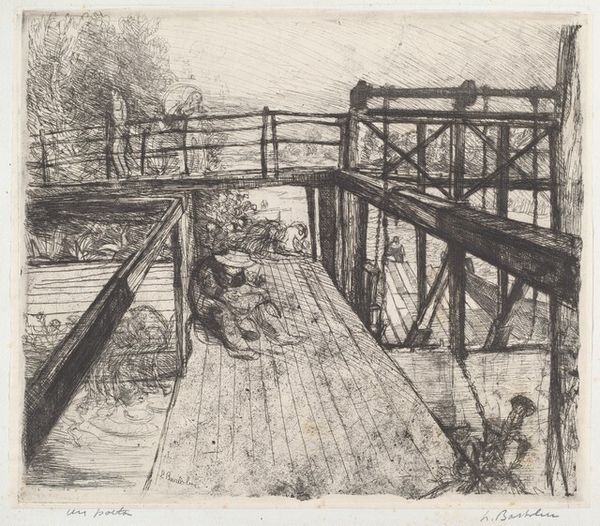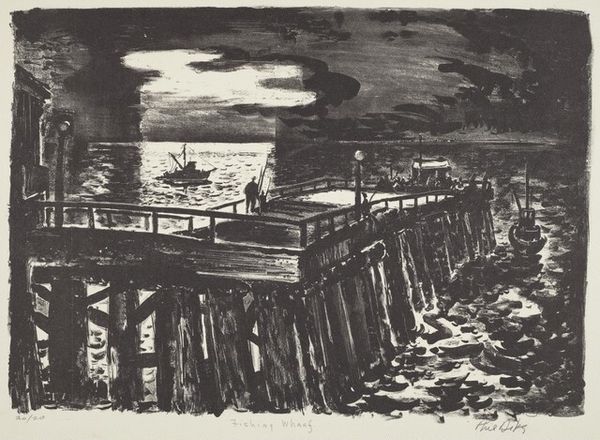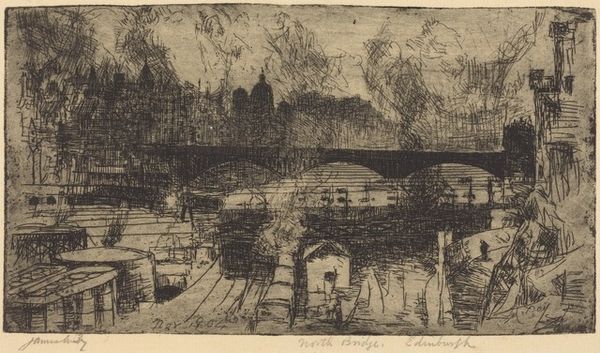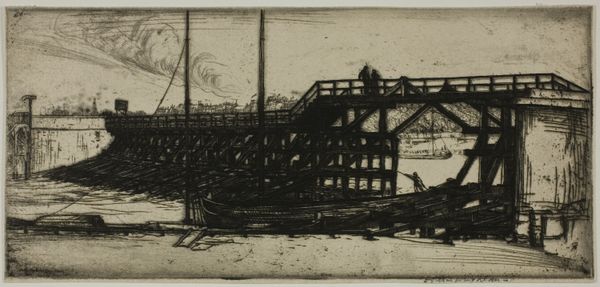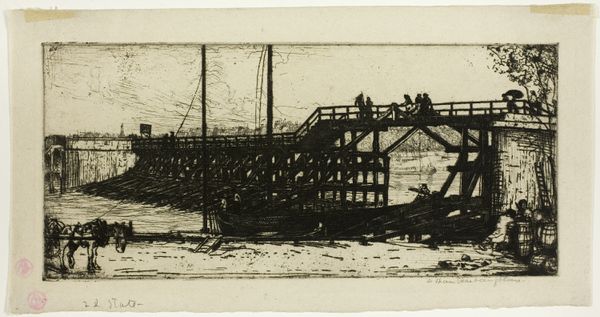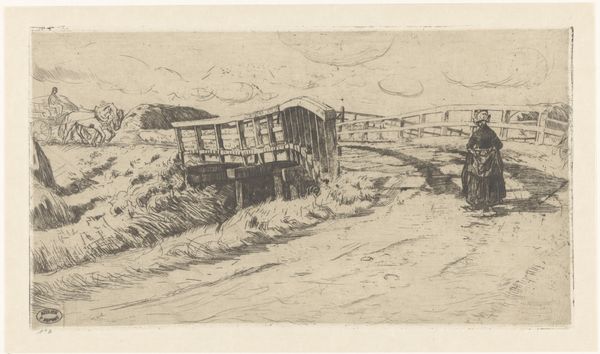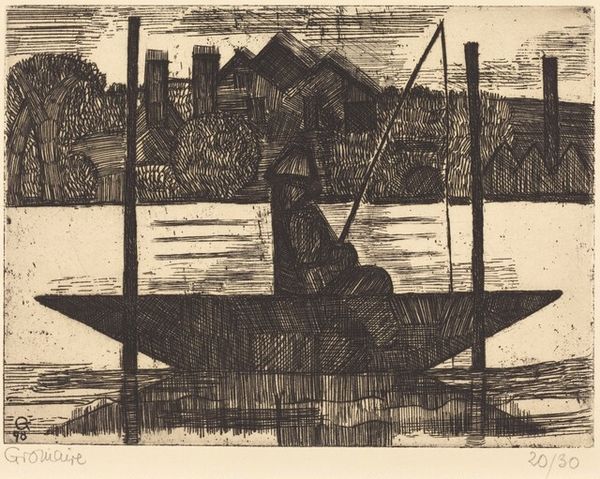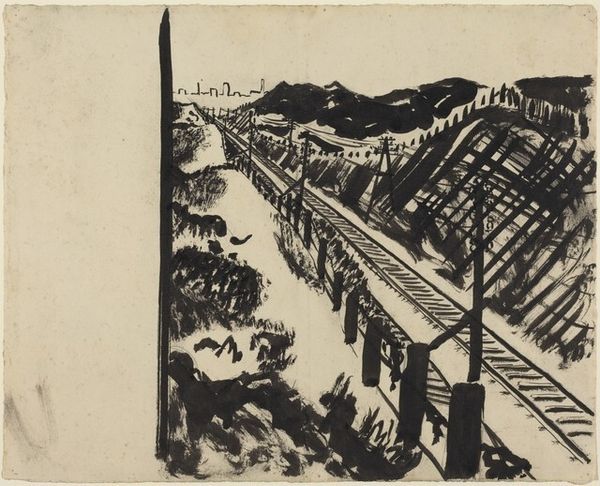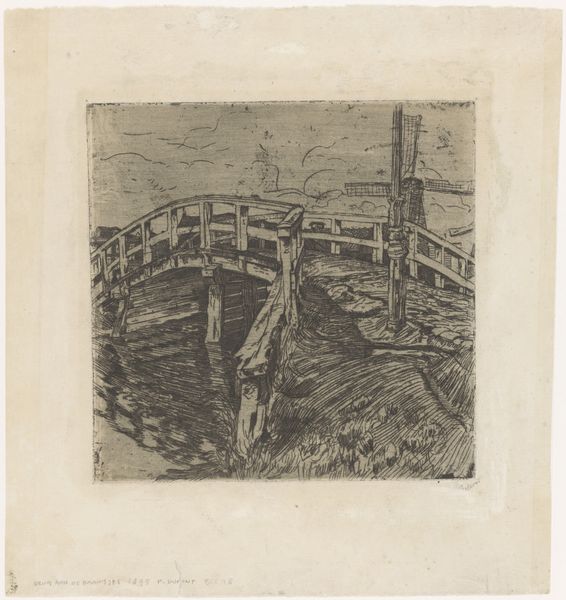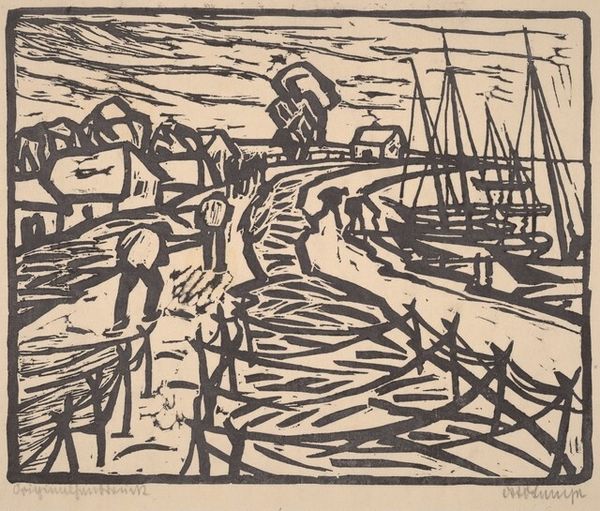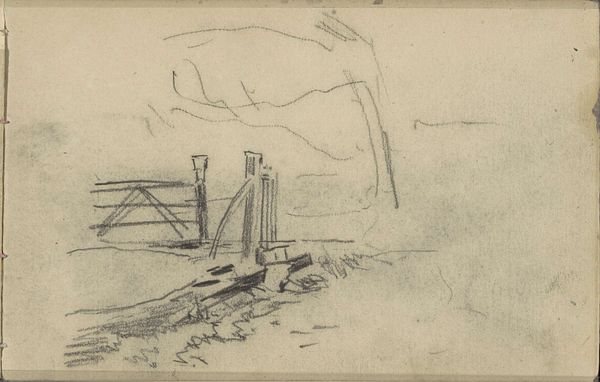
Dimensions: Image: 110 x 145 mm Sheet: 249 x 318 mm
Copyright: National Gallery of Art: CC0 1.0
Curator: Gertrude Fiske's etching, "Untitled (Bridge in the Rain)," created around 1920, offers us a glimpse into a bygone urban scene. What strikes you initially about this work? Editor: The first thing I notice is the dense materiality conveyed through those etched lines. It's almost gritty, evoking the feeling of dampness and the heaviness of the rain-soaked wooden bridge. Curator: Yes, there’s a palpable sense of atmosphere. Rain, especially, has been employed in visual art as symbolic of change or of melancholy. What meanings might be found in these figures, sheltering beneath their umbrellas on the bridge? Editor: Consider the laborious etching process required to depict something as transient as a rain shower. There's such visible labor involved in creating this texture! I can’t help but think about how the artist’s hand was so present, using repetitive actions to wear away the material and capture this fleeting moment. Curator: The repetition and detail also recall older printmaking traditions. The umbrella-bearing figures have an almost ceremonial quality, reminiscent of figures moving in a ritual procession. And, of course, bridges often symbolize transitions or connections. Are we witnessing a community bridging a gap, perhaps even during a time of cultural transformation? Editor: Maybe we’re meant to ponder our relationship to civic infrastructures. The artist would have grappled with their copper plate in reverse, materially re-thinking our access and connections in an industrializing landscape. Also, the very act of making multiple prints allows the artwork to spread. Did Fiske intend for the image of this bridge to connect to new communities in a post-war moment? Curator: The power lines hint at the advances of modernization, so she might be saying that connection can arrive through these industrial advances, too. Yet the lines that render the wooden planks appear heavy and perhaps old-fashioned. The scene evokes both progress and the remnants of the past. Editor: Looking again, I’m seeing an allegory of sorts for both a society and its arts. Both make the slow trek together in uncertain weather, reliant on infrastructure to make communal experiences possible. Curator: That's a beautiful thought to consider. The city itself, like this etching, carries the accumulated marks of the past. Editor: It all adds to my fascination. I appreciate this artwork as evidence of her material transformation of the urban landscape and also an assertion of her labor, as both citizen and artist.
Comments
No comments
Be the first to comment and join the conversation on the ultimate creative platform.
